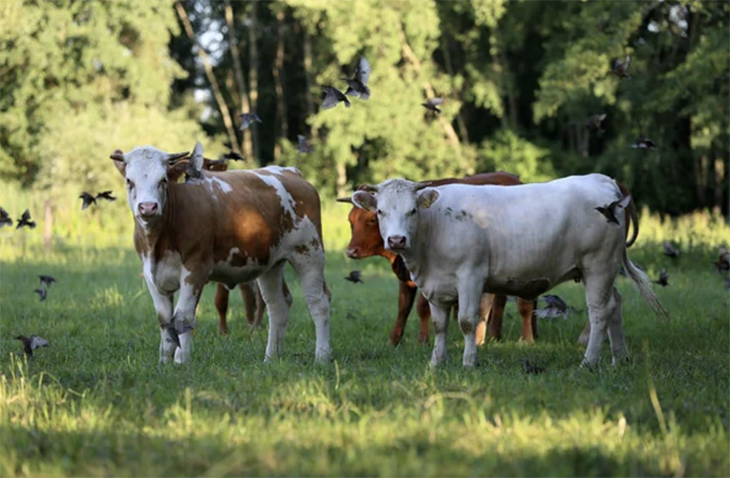
A dairy cattle worker in Texas has become the second person in the United States to test positive for H5N1 avian influenza, commonly known as bird flu, according to the U.S. Centers for Disease Control and Prevention (CDC).
The individual exhibited only mild symptoms, specifically eye redness typical of conjunctivitis, commonly known as pink eye. They are currently recovering and undergoing treatment with antiviral medication to prevent severe influenza. The CDC said in a statement that the person to isolate to avoid any potential spread of the virus.
Despite this new case, the CDC maintains that the risk of bird flu infection among the general population remains low. The only other confirmed human case of H5N1 in the United States was reported in Colorado in 2022, involving a poultry worker.
“It is still extremely rare for people to catch this virus,” says Richard Webby, PhD, the director of the World Health Organization Collaborating Center for Studies on the Ecology of Influenza in Animals and Birds.
Dr. Webby also happens to be a member of the department of host-microbe interactions at St. Jude Children’s Research Hospital in Memphis, Tennessee.
Both cases involved individuals who had close contact with infected animals through their occupations, underscoring the occupational hazard for those working in close proximity to birds and other susceptible animals.
There is ‘Essentially No Risk’ of Bird Flu Spreading Amongst Humans
“Right now, the vast majority of people are at essentially no risk from this virus in its current form. However, people do need to be aware that the virus is in wildlife, and be a bit cautious around animals that appear sick,” Dr. Webby says.
H5N1 bird flu is prevalent among wild birds in the United States and around the world. The virus has led to outbreaks on commercial poultry farms and smaller backyard flocks. It has also occasionally infected various wild and domestic animals, including foxes, skunks, bears, tigers, and leopards.
The CDC has been vigilant in monitoring potential human exposure to bird flu since the outbreaks were first detected in wild birds and poultry in the U.S. 2021. Human infections can range from mild symptoms, such as eye infections and respiratory issues, to severe illnesses like pneumonia. Globally, some human infections have resulted in fatalities.
The CDC’s identification of this second human bird flu case in the U.S. highlight the effectiveness of their ongoing surveillance efforts, according to William Schaffner, MD, a professor of preventive medicine and infectious diseases at Vanderbilt University Medical Center in Nashville, Tennessee. The organization’s monitoring systems are crucial for early detection and prevention of potential outbreaks.
Despite More Cases Being Detected, Bird Flu in Humans Still Rare
“We are looking harder and therefore finding more. Surveillance for influenza variants now is both more intense and more sophisticated than it was even 10 years ago, so these unusual infections are better detected,” Dr. Schaffner says.
However, bird flu infections are expected to remain rare since the virus has not yet developed the ability to spread easily from person to person, Dr. Schaffer adds. “The current intensive surveillance may well detect a few more cases, but they will be rare,” he adds. “Fortunately, our current diagnostic tests and antiviral drugs remain effective in diagnosing and treating these unusual bird flu infections.”
There are two antiviral medications, baoxavir (Xofluza) and osteltamivir (Tamiflu), which are effective against both seasonal flu and bird flu. These medications can help mitigate the severity of the illness and aid in recovery.
To further reduce the already low risk of bird flu infection, the CDC recommends that people avoid exposure to sick or dead animals, raw milk, feces, or other materials contaminated by birds or animals. Additionally, people should not prepare or consume uncooked or undercooked animals products or unpasteurized milk or cheeses from animals suspected of having a bird flu infection. The CDC assures that commercially available milk is safe as it is pasteurized.
The CDC’s guidance emphasizes the importance of proper food handling and avoiding direct contact with potentially infected animals to prevent transmission of the virus. Public awareness and adherence to these recommendations are essential in minimizing the risk of bird flu infections.



